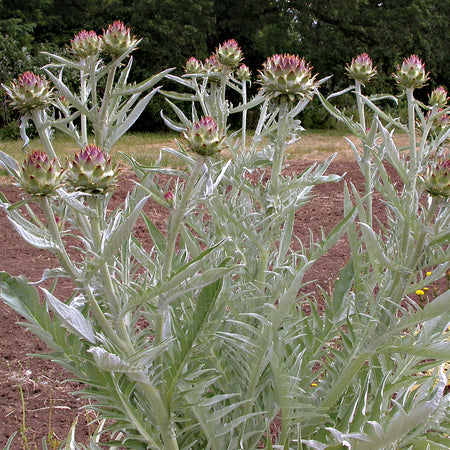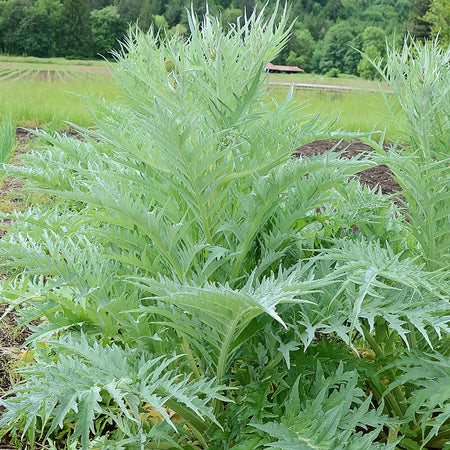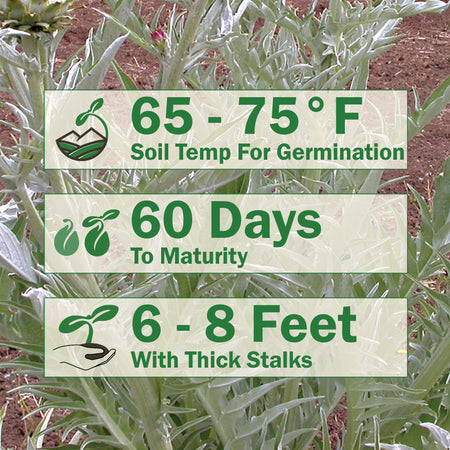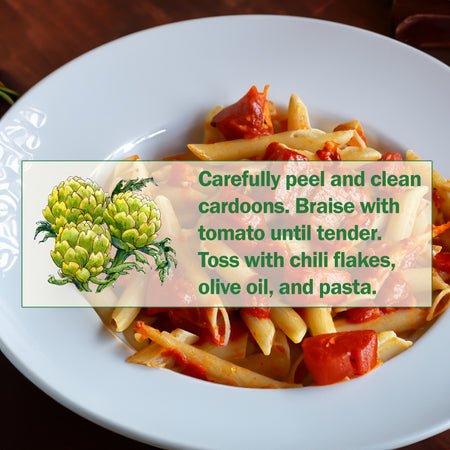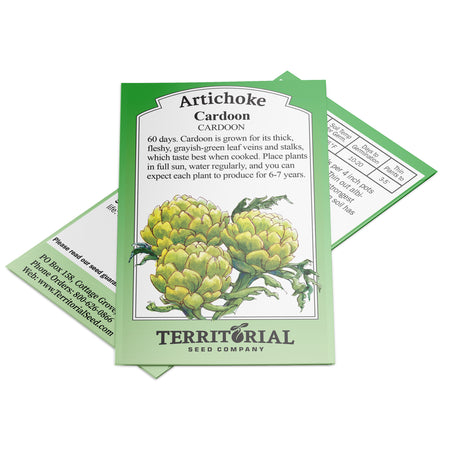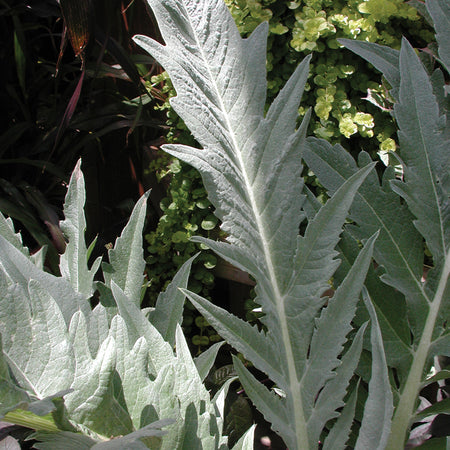CARDOON
Product Description:
| Soil Temp for Germ | 65–75°F |
| Seed Depth | ¼" |
| Days to Emergence | 10–20 |
| Soil Temp for Transp | 45°F |
| Plant Spacing | 3–5' |
| Row Spacing | 4–6' |
| Fertilizer Needs | Low |
| Minimum Germination | 70% |
| Seeds per Gram | ≈ 15–20 |
| Seed Life | 1 year |
Cynara cardunculus var. scolymus The flower buds of the artichoke are the harvested part of the plant. Artichokes are reported to contain the highest level of antioxidants of all vegetables!
C. cardunculus Cardoon is a relative of the artichoke. Instead of consuming the flower as with artichokes, the fleshy leaf stems are eaten.
Days to maturity are calculated from date of transplant.
Culture
• Artichokes are a tender perennial that prefer mild winters and cool summers
• Deep, fertile, well-drained soils with a pH of 6.5-7.5 provide optimum growth
• Before a hard frost, cut plants to 8-10 inches above ground and mulch with clean straw to keep the crown from freezing; crown death may occur at 25°F or lower
Direct Sowing
• Not recommended
Transplanting
• Start indoors in February, sow 3-5 seeds per 4 inch pot; thin out weak or thorny seedlings and keep the strongest plant
• Transplant after danger of frost, but when the seedlings can still receive 10-12 days of temperatures under 50°F to induce budding
• Work in 1 cup of TSC's Complete fertilizer around each plant
Insects & Diseases
• Common insects: Aphids
• Insect control: Pyrethrin or Insecticidal Soap
• Common diseases: Crown rot, powdery mildew, molds
• Disease prevention: Avoid overhead irrigation and water-logged soil
Harvest & Storage
• Cut buds before they start to open
• Smaller artichokes are the most tender
• Cardoon can be harvested green or blanched white by wrapping the young stalks with newspaper or piling straw around the plants for 30 days prior to harvest
• Store at 36°F and 95% relative humidity

